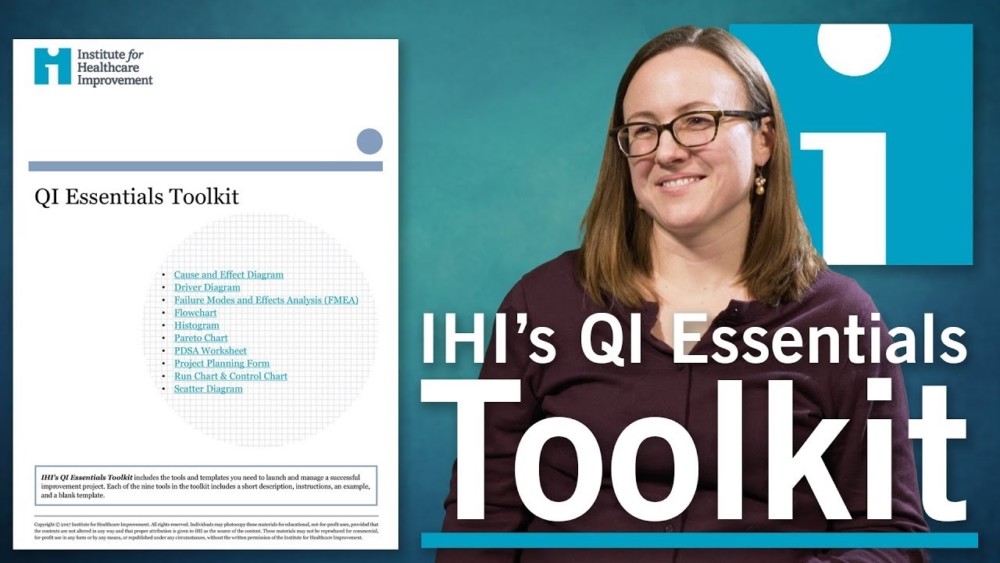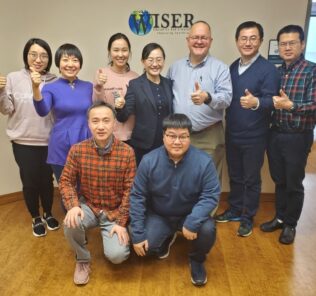IHI Quality Improvement Essentials Toolkit Helps Optimize Outcomes
The Institute for Healthcare Improvement (IHI) released a Quality Improvement Essentials Toolkit that includes the tools and templates needed to launch a successful quality improvement project. The toolkit also helps guide healthcare professionals to better manage performance improvement. Each team and project is slightly different in terms of what tools are relevant and how they should be utilized in that setting.
Each of the ten tools provided by the IHI QI toolkit can be used with the Model for Improvement, Lean or Six Sigma. They all include a short description, instructions and an example. The example is filled out to allow the learners to see what the tool might look like. There is also a blank template for the user to use in their own work. Together, the tools can all be downloaded at once or can be individually downloaded as the user needs specific ones to guide their continuous improvement work.
The quality improvement essentials toolkit is designed to identify vital, high-priority areas through a pareto chart as well. Run chart and control chart serve as tools to better understand variations occurring in a system and are useful when there is a special cause for an improvement. These tools can serve a number of purposes throughout an improvement project.
Sponsored Content:
For example, the tools can help to gather information and to display and organize that information so a learner can visualize their theory on paper. They can also help to demonstrate relationships in the data that aren’t showing up in a system. Therefore, they help learners to understand what this absence of data may mean through a scatter plot.
The quality improvement tools include a cause and effect diagram, also known as the Ishikawa or fishbone diagram, to help learners analyze the root causes contributing to an outcome. Another tool is a failure modes and effects analysis. Also used in Lean management and Six Sigma, FMEA is a systematic, proactive method for identifying potential risks and their impacts.
Other toolkit resources are the run charts and control charts intended to assist learners in the ability to monitor performance and visualize variation. A PDSA worksheet provides plan-do-study-act rapid-cycle testing that helps teams assess whether a change leads to improvement using a methodical learning process.
Learning How to Improve Quality
Sponsored Content:
According to IHI, achieving quality involves the Science of Improvement: Selecting Changes. As all improvement requires change, the ability to develop, test and implement changes is essential for any individual, group or organization that wants to continuously improve. IHI explains that specific changes are developed from a limited number of change concepts. The organization explains:
“A change concept is a general notion or approach to change that has been found to be useful in developing specific ideas for changes that lead to improvement. Creatively combining these change concepts with knowledge about specific subjects can help generate ideas for tests of change. After generating ideas, run Plan-Do-Study-Act (PDSA) cycles to test a change or group of changes on a small scale to see if they result in improvement. If they do, expand the tests and gradually incorporate larger and larger samples until you are confident that the changes should be adopted more widely.”
Examples of change concepts include the search for ways to eliminate any activity or resource, inventory of all types as a possible source of waste and the push for a change in the work environment to leverage more effective progress. Other ways to work toward the optimization of quality improvement are to manage time, focus on variation, proof for errors, focus on the product or service and improve workflow.
The Importance of Quality Improvement during Healthcare Crises
In the IHI article “The Clarity and Power of Using QI Amid a Crisis” the organization explains the importance of continuous quality improvement, especially during a healthcare crisis. Since 2015, IHI has built a learning network in Cincinnati to help the city’s children be the healthiest in the nation. To achieve this mission, the organization provided structures, methods and expertise for partners from multiple sectors to apply quality improvement science in their organizational efforts to help children thrive.
In times of crisis, IHI had to quickly understand and respond to emerging threats and decide if and how the organization’s current work and improvement methods remained relevant. The organization stopped to reflect on the following questions:
- What does success look like?
- How will we know whether we are achieving it?
- What do the data tell us? Who needs what where?
- Who else is in this work? Who are we in this work?
By answering these fundamental questions, IHI discovered that QI provided the principles and practices needed to navigate a crisis. The organization explains that “QI was not a luxury item to be put down in times of crisis. Rather, QI was a fundamental approach to moving through the confusion and paralysis induced by the chaotic state to characterizing the complex set of emerging conditions and disciplined action required. It was a simple matter of asking and answering a series of basic questions over and over.”
Ultimately, QI provided the way for IHI to respond with agility, urgency and action, to center the needs of the community and to work with others. The organization is hopeful that the core strengths of QI – outcomes, scale, theory and learning – have also demonstrated the way to build new and improved systems for what IHI hopes is an even better future.
About The Institute for Healthcare Improvement
The Institute for Healthcare Improvement (IHI) is an independent, nonprofit organization that works with healthcare professionals. The organization develops and adapts a variety of tools to help organizations accelerate improvement. In addition to the Quality Improvement Essentials Toolkit, the IHI offers a Patient Safety Essentials Toolkit, IHI Global Trigger Tool for Measuring Adverse Events and a Situation-Background-Assessment-Recommendation (SBAR) Tool.
Many organizations develop tools in the course of their improvement efforts — such as successful protocols, order sets and forms, instructions and guidelines for implementing key changes — and are making them available on IHI.org for others to use or adapt in their own organizations. For example, the 100 Million Healthier Lives initiative (100MLives) provides IHI with key information and tools to support communities and organizations. This decision is aligned with the goal of authentically engaging people with lived experiences in co-design and implementation efforts.
Learn More About the Institute for Healthcare Improvement
Sponsored Content:



















